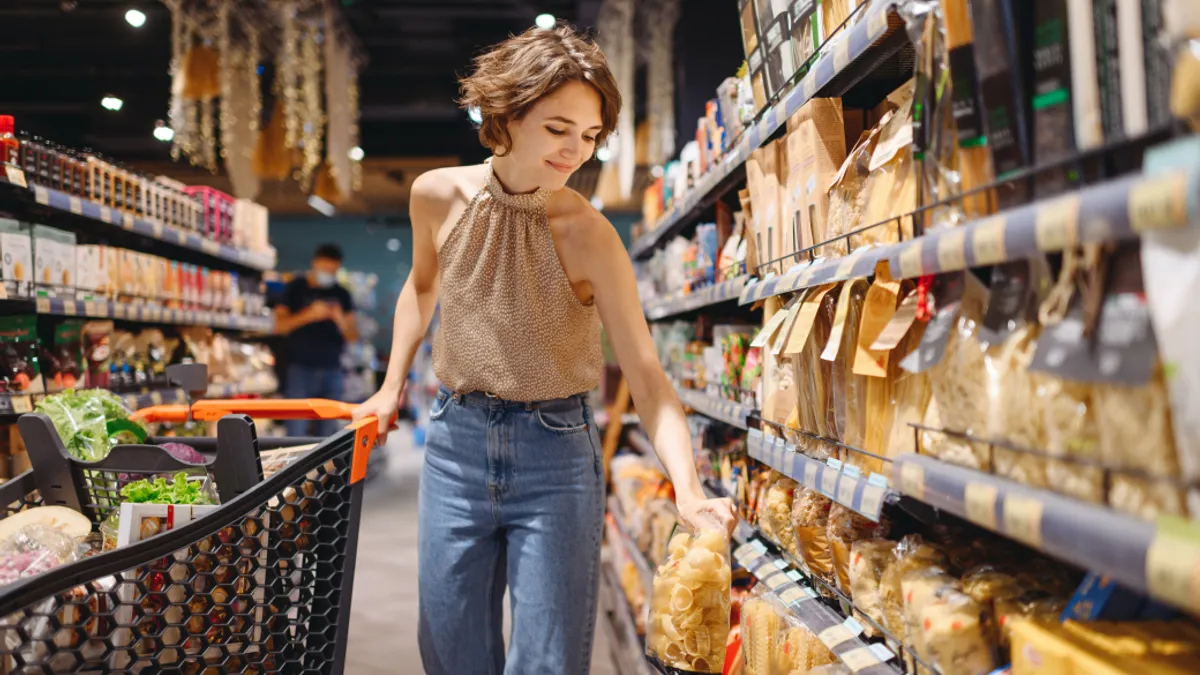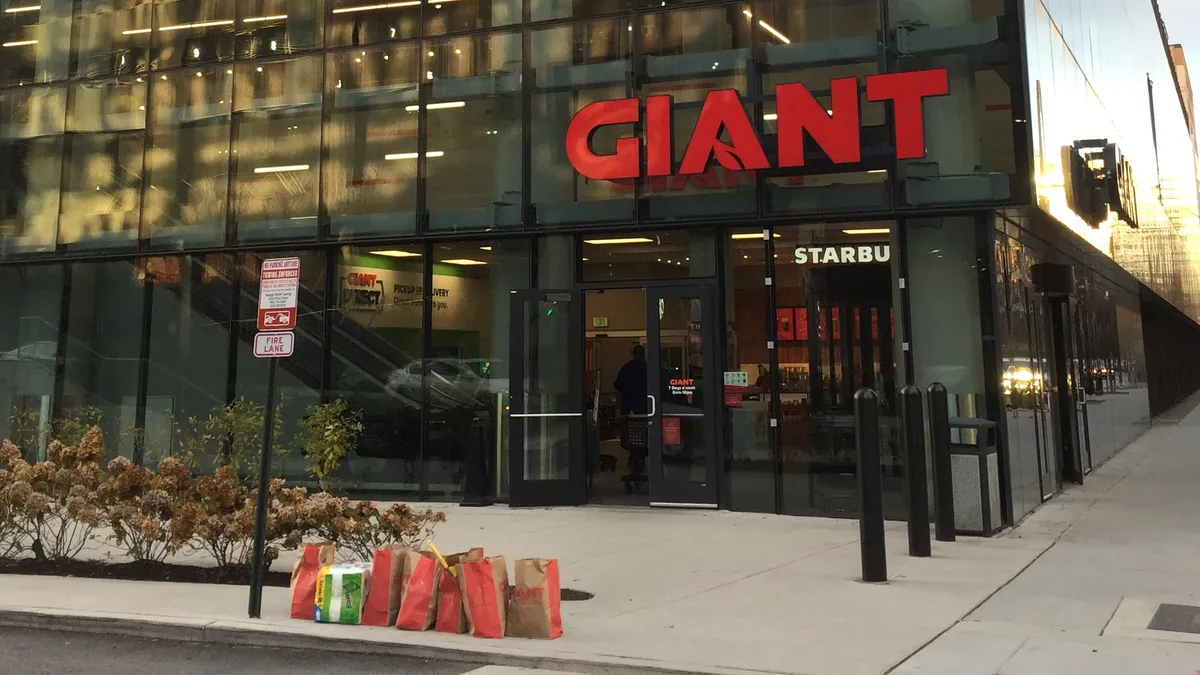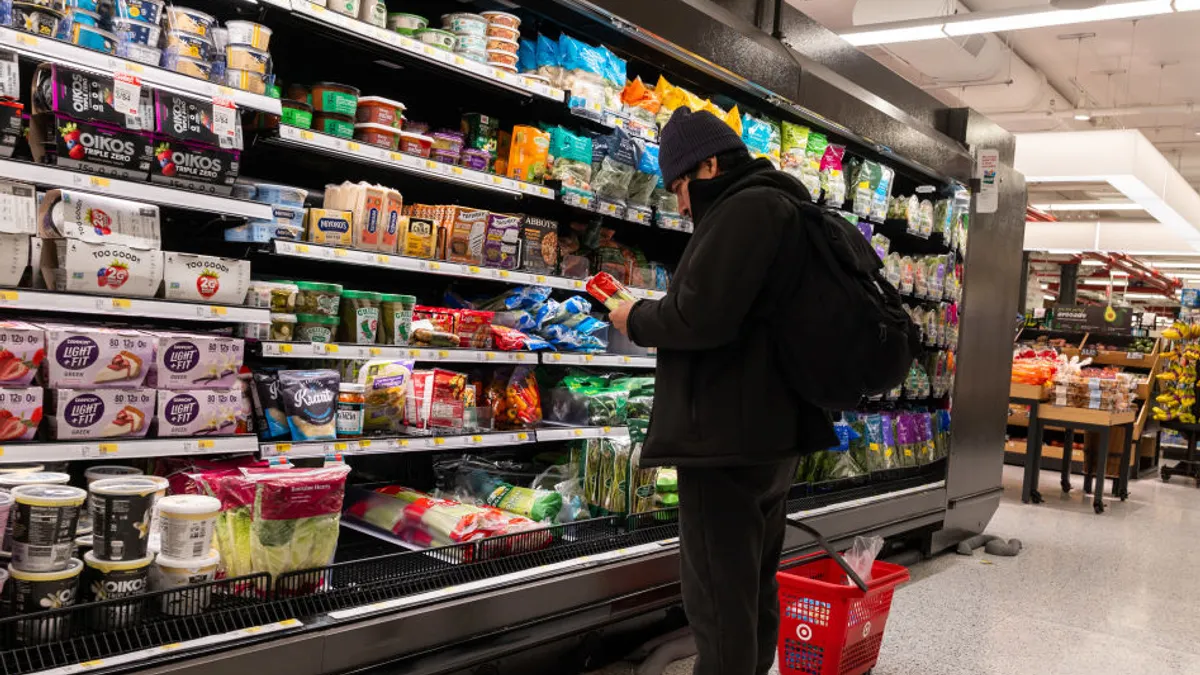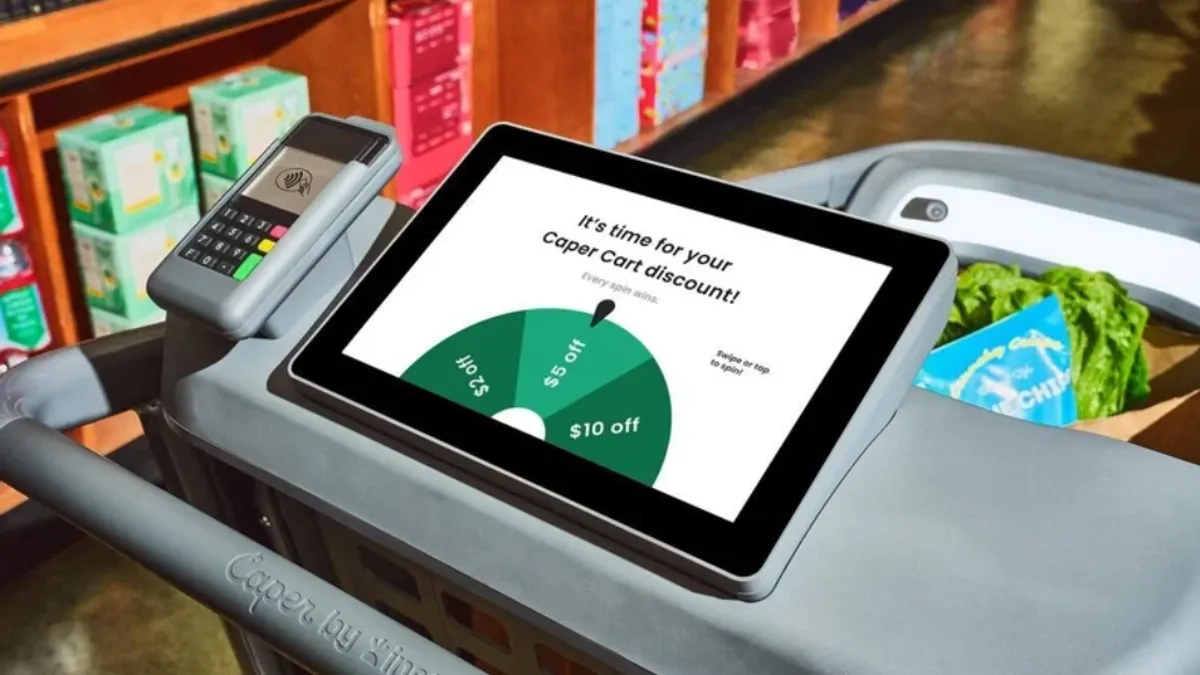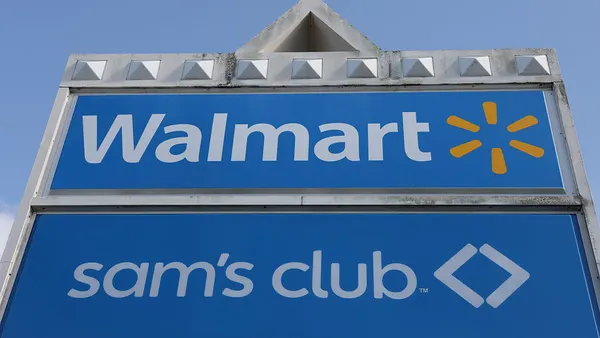When examining the grocery industry’s prospects in 2024, it’s hard to overstate the significance of the Kroger-Albertsons merger.
If the Federal Trade Commission allows the $24.6 billion deal to proceed — or if the grocer prevails in federal court over a challenge from the agency — it would reshape the competitive landscape in the U.S. The combination would introduce a colossal new supermarket player and would very likely create a ripple effect that impacts everything from supply chains to M&A activity across the grocery space.
If the two companies aren’t able to consummate the deal, or if they get bogged down in a protracted legal battle with the FTC, the year will look quite different.
But the mega-merger isn’t the only significant topic for 2024. In interviews with experts over the past few weeks, we’ve heard about a variety of challenges and opportunities facing the grocery industry.
Although consumer price sensitivity stemming from inflation will continue to test grocers’ ability to offer discounts and market affordability, the demand for both in-store and digital experiences means there’s never been a better time to craft a unique omnichannel business strategy.
Here’s a look at the eight trends that promise to impact the grocery industry this year.
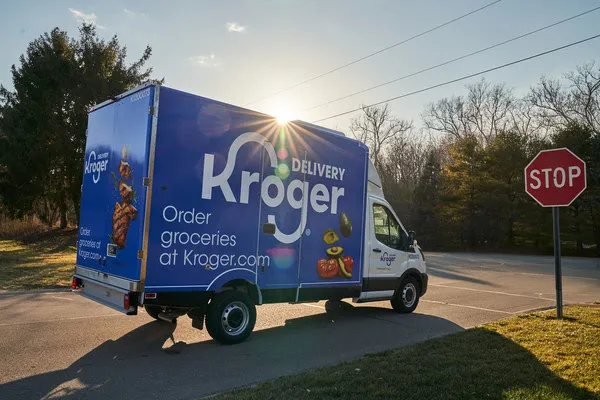
Value retailing is here to stay
Experts agreed that they expect to see inflation cool in 2024. However, many consumers still don’t feel great about the economy and their financial situation.
Neil Stern, CEO of Good Food Holdings, anticipates rapid disinflation in the new year and predicts that private label will be a “big part” of grocers’ efforts to drive value. As private brand sales have increased, national CPG brands have started to see an erosion in their sales, which will lead to them getting aggressive about maintaining their market position through promotions and incentives, said John Clear, senior director at consulting firm Alvarez & Marsal. Over the next 12 months, Clear said he expects to see a “pricing war.”
Increasing units will also be a big focus of 2024, experts said. In recent years, retailers have been able to manage unit decreases with price increases. But as price increases come down, Stern expects manufacturers will ramp up promotional activity in stores to get consumers to buy more products.
“I think a lot of retailers are also going to be thinking about how to upgrade their abilities to measure elasticity both for shelf pricing and promotional pricing given new technologies and given that the return on making smarter decisions is higher than ever,” said Bobby Gibbs, partner in Oliver Wyman's Retail & Consumer Goods team.
Retailers will take a more sophisticated approach to omnichannel
After long treating in-store shopping and e-commerce as separate channels, grocers could finally be ready to press ahead with omnichannel strategies that meld physical and digital shopping into a unified experience.
Fueled by the retail media networks that have taken the grocery industry by storm over the past year, grocers are poised to take steps like building mobile apps designed with in-store shopping as a priority and using electronic shelf labels to make personalized offers more dynamic, said Tom Furphy, a former Amazon executive who is now CEO of Replenium, an automated replenishment technology company.
Furphy added that he thinks retailers will need to take a more ambitious and purposeful approach to their omnichannel operations. That means grocers that look beyond simply managing pickup and delivery services will be in the best position to connect with digitally focused consumers, he said.
“Stores are the key enabler of winning the future of grocery,” said Jordan Berke, a former Walmart e-commerce executive founder and CEO of Tomorrow Retail Consulting. “This whole idea of in-store digital engagement and really creating applications that make your app what we would call an all-channel utility, rather than just an e-commerce tool or a loyalty app … [should be] the long-term goal” for retailers.
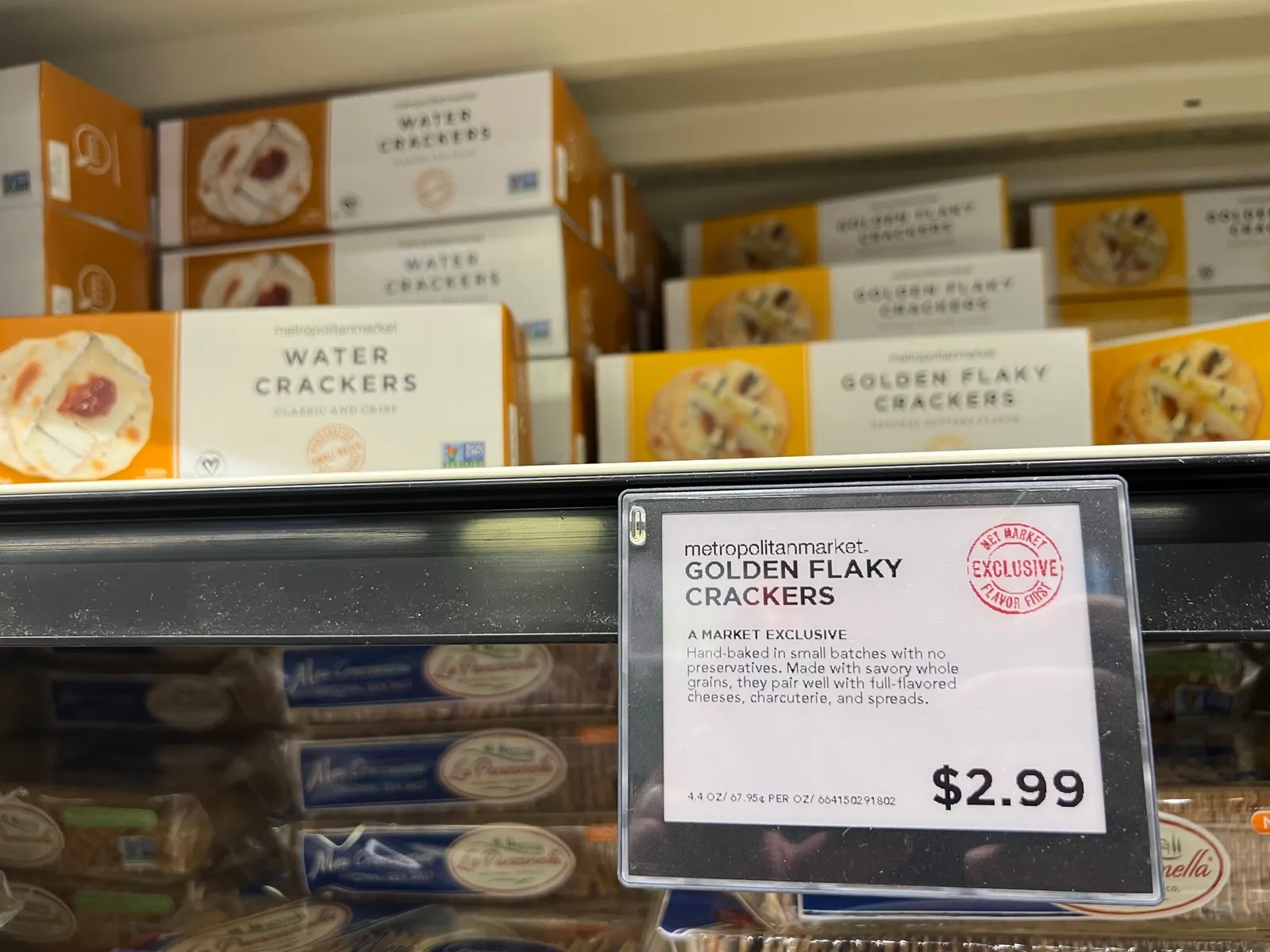
All eyes on the Kroger-Albertsons merger
The Federal Trade Commission has until Jan. 17 to make a decision on the proposed Kroger-Albertsons merger, per a court filing reported by Bloomberg — and the industry is eagerly watching, experts said.
If the deal goes through, grocers will be facing C&S Wholesale Grocer as a new competitor in the markets where the company would pick up stores divested as part of the merger.
That includes Good Food Holdings, which operates stores across West Coast markets set to be impacted by the Kroger-Albertsons divestiture plan. If the deal closes, Stern said he expects a “shake up potentially in the real estate market” and an uptick in mergers and acquisitions in the grocery industry.
Kroger Chairman and CEO Rodney McMullen told investors at the end of last year that he expects the transaction to close in early 2024. If the FTC tries to block the deal, Kroger executives have repeatedly said the grocer is ready to fight to defend the merger in court — leaving grocers waiting longer for an outcome.
Walmart is poised for a really big year
Walmart doubled down on its strong position in the grocery sector last year — and the retailer is in pole position to further consolidate its power in 2024, particularly in e-commerce.
“Walmart is firing on all cylinders. They will go probably from great to even greater in 2024, particularly in food and consumables,” said Berke. “All indications are that Walmart continues to get stronger and more differentiated.”
Berke expects Walmart to focus heavily in 2024 on its express delivery service, under which it promises to fulfill orders within 30 to 90 minutes. Walmart has been less aggressive than competitors like Instacart in the sub-two-hour delivery space, but the company is well-situated to make inroads because of its Spark Driver gig worker platform, Berke added.
“The battleground in terms of e-commerce for grocers this year is winning in that on-demand window,” he said.
Walmart also stands to continue benefiting because the other kinds of products it carries drive so much traffic to its grocery business, according to Berke. “Walmart has what we call one plus one equals 11, [with] groceries and general merchandise being so synergistic.”

Grocers will keep ramping up in-store experiences
Grocers will focus more on authenticity and curated culinary offerings to help draw customers back to stores in 2024, Stern predicted.
“We’ve gotten a little stale as an industry,” Stern said. “How do we really up our food game?”
As grocers look to ramp up their restaurant-quality experiences, Stern highlighted the Manhattan Wegmans with its Japanese fish offerings and Northgate Market’s new Mercado concept with food vendors serving authentic Mexican cuisine such as churros.
Anne Mezzenga, co-CEO of retail podcast OmniTalk and a former Target executive, said she expects grocers to emphasize seamless experiences by making investments in a “smart store” concept that connects technologies.
Schnuck Markets, for example, is using aisle-roaming robots and electronic shelf labels, she said. Those technologies not only help reduce shrink and improve inventory visibility to create a “main brain” for the store, but also can make the shopping experience better, Mezzenga said. Gathering more customer data is also key, she added.
“If I'm going to come in the store, you need to know me as well as you know me online, so that you can personalize that shopping experience in-store for me and make me feel like it's just as convenient as me ordering ahead and picking up curbside,” said Mezzenga.
E-commerce fulfillment will center on stores
Kroger’s decision last year to pause the rollout of its fleet of automated order fulfillment centers with U.K.-based robotics company Ocado was a sign to industry experts of the dampening enthusiasm around using separate facilities to fill online orders.
Mezzenga said that Kroger’s pull-back from its Ocado partnership signifies how more grocers will likely shift focus to hybrid automation solutions, such as implementing automation technology in regional distribution centers or larger store locations.
In mid-August, Giant Food confirmed it would be closing three e-commerce facilities in Maryland, Virginia and Delaware as part of an effort to provide delivery services using a “localized fulfillment model,” which would better accommodate online shoppers’ expectations.
Clear also predicts grocers will focus mainly on in-store and front-of-house technology investments to optimize in-store labor. Other tools, such as electronic shelf labels and inventory scanning robots, will reduce time spent on “non-value added tasks” like changing price labels and allow employees to focus on the customer experience, Clear said.
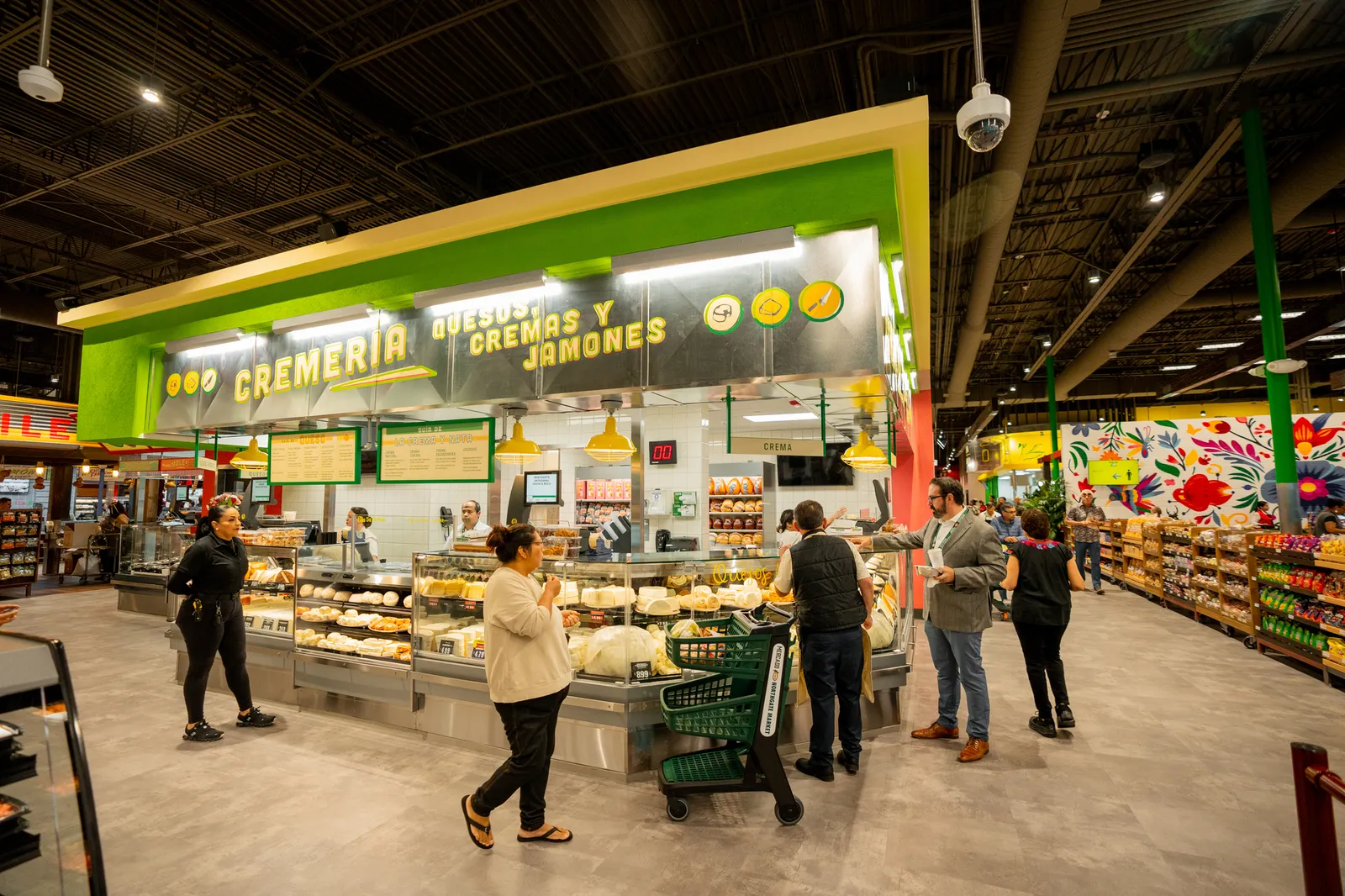
This is the year retail media starts to grow up
After spending 2023 adding retail media networks to their repertoire of tools, grocers are now poised to significantly improve how they use the vast troves of information they collect with the platforms, analysts said.
“You’re seeing a lot of retailers very willing to sell their customers’ data. But I think they’re also underutilizing it,” Furphy said, adding that he thinks companies will do a better job of creating personalized retail media experiences in 2024 as they become more adept with artificial intelligence and data science technology.
Furphy also thinks retailers and advertisers will need to be increasingly careful not to overload consumers with marketing messages as retail media technology proliferates.
Beyond improving their ability to analyze data they collect using their media networks, large retailers like Amazon Walmart and Target are also likely to step up the quality of the content they present to shoppers during the coming year, Berke said.
“The leading retail media networks are really going to emerge as Madison Avenue stalwarts and really become highly competitive media businesses” in 2024, said Berke.
Gary Hawkins, founder and CEO of the Center for Advancing Retail & Technology, said he expects retail media networks to start providing more insight to CPGs about the connection between their ads and the specific items people purchase. Suppliers will be able to use that information to develop broader ad campaigns that go beyond their relationships with individual retailers, he said.
AI will become a co-pilot for grocers and consumers
Heading into 2024, traditional AI and generative AI will alter grocers’ omnichannel platforms as well as shape the customer experience, according to Gibbs.
Generative AI is already impacting the push notifications and one-to-one personalization customers receive online, according to Gibbs. Moving forward, the technology will become more integrated with grocers’ apps and websites. With these advancements, platforms are also offering more “conversational commerce,” Gibbs said, meaning a more personalized experience built right into the site rather than shoppers needing to enter information into a search bar or chatbot.
While the best personalized recommendations still come from traditional AI techniques, Gibbs noted that generative AI will complement these systems well by, for example, supplementing tools like image generation.
In late May 2023, Instacart announced the rollout of a generative AI-powered search tool called Ask Instacart that allows customers to find products as well as recipes, food prep tips and more using “natural language” rather than keyword-based searches.


